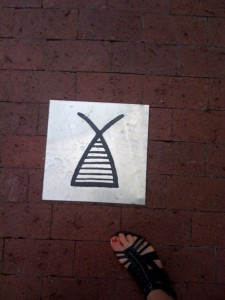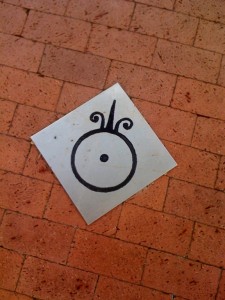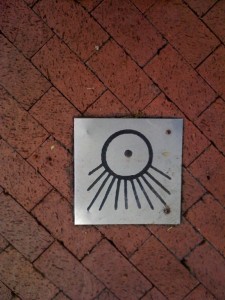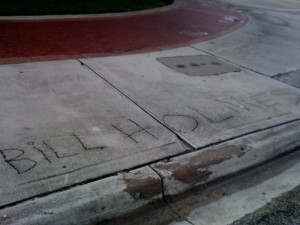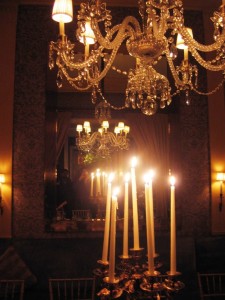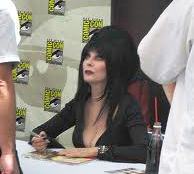By Kathleen Pickering http://www.kathleenpickering.com
One of the beauties of being an author is that you find stories everywhere. Since this is a mystery writers’ bog where I am so kindly welcomed as a multi-genre author, I want to try my hand at a mystery. Wanna play?
So, it’s a beautiful Sunday morning along the New River in downtown Fort Lauderdale. You are heading for a Jazz Festival where folks may not actually be as they seem.
To reach the river, you enter an open park with a large pavilion just before the river walk. On the paved sidewalk you find this symbol:
You think, that’s cool. Is it a fish? A dwelling? It’s just a novelty until you reach the other side of the park. There where the path ends you see this symbol:
Now, you can’t help it. You follow the orange-brick road circling the other side of the park and discover this:
Now, you’re wondering, is this a secret code? Directions for aliens landing on the green? These symbols are not located at the four compass points, but simply dotting the path at four points where you would enter or exit the park. So, now, your curiosity is peaked. Is there another symbol in the other section you haven’t checked? Sure enough. At the path by the fountain at the city side of the park, you find this:
Then someone’s name is carved into the cement at the foot of the park:
If you tell me what kind of mystery this creates for you, I’ll tell you mine. I’m sure someone smarter than I will be able to tell me what these symbols represent. In the meantime, let’s make our own meaning and build a mystery. It doesn’t have to be long. A paragraph or two, like a cover blurb, will do just fine.
Now, as a throw in . . . across from the park is an open pit where they’re starting construction. The pit is lined with fencing decorate with images such as these:
On the other side of the park is an odd tavern filled with flotsam and jetsam. It’s masthead is a flying mermaid. Do either of these locations have anything to do with the symbols?
Let ‘er rip, mystery writers! The winner gets a free, autographed copy of Mythological Sam – The Call. Let’s see what you can do!


